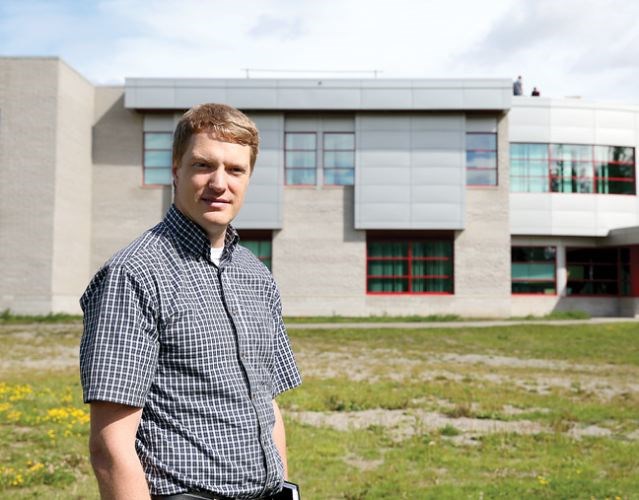The University of Northern B.C. is using solar panels to light up learning opportunities for post-secondary, high school and elementary students alike.
Twenty-five panels were installed at UNBC's Conference Centre Tuesday, in honour of the institution's 25th anniversary.
"We want to be able to showcase different types of energy use and energy production," said David Claus, assistant director of facilities.
"It enables students to both see and observe how that works, what the physical infrastructure (looks like)," Claus said.
Sixteen of those panels were donated by School District 57, saved free of damage from Highglen Montessori elementary school after it was destroyed in a fire in 2013.
"It's neat to see how that partnership has come together and we're able to still honour the original intent of that installation in terms of having them available for school groups to see," he said.
Nine panels were purchased for a total value of $53,400 from the partners, which include the school district, university and Pacific Institute for Climate Solutions.
The panels have a monitoring system, which can track in almost real-time how much energy is being generated and used.
They were installed with frames that can be tilted according to the sun's path.
Curriculum has also been created for the various classes to start using this fall.
The solar panels are the first to be permanently installed at the university, which does have some in the field, like at the Aleza Lake research forest.
That's where they can likely be best used, Claus said.
"You have a building out there for instance, even if it's just one kilometre away from the nearest power line that can be quite cost prohibitive to run electricity out to, so that's where this sort of technology is much more applicable."
These 25 are mostly a teaching instrument, said Claus, acknowledging the 5000 kilowatt hours of electricity expected to be produced for the university per year, isn't much.
That works out to roughly half of what a typical household uses in a year.
Or, with full sun, it could power up to 145 laptops.
"It's one thing to explain how it works and how you could theoretically do that but it's another thing if people can see it has been done and this is what it looks like and what it cost and what was involved," said Claus.



